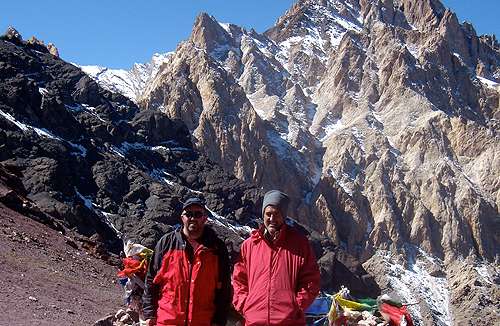Rewriting Himalayan History: Ancient oceans on the top of the world

(Phys.org)—The Himalayas could be 20 million years younger than we think, according to ongoing research at the University of Sydney's School of Geosciences.
The Indian subcontinent may have collided with Eurasia and produced the Himalayas much later than geology textbooks currently claim, the University of Sydney's Head of the School of Geosciences, Professor Jonathan Aitchison says.
New evidence Professor Aitchison has collected and analysed with his research team indicates that the continental collision responsible might have happened only 35 million years ago, not 55, as currently believed. They found that India experienced multiple collisions as it travelled north, with the final collision between India and Asia occurring considerably later than originally thought.
"We looked at a number of indicators to determine when the mountain range formed," said Professor Aitchison.
"Examining the youngest marine rocks deposited between India and Asia showed that the collision between these two land masses happened around 35 million years ago. Obviously, once India and Asia collided there was no longer an ocean between them. Looking at the last marine rocks in the area gives us an indication of when the area last had an ocean above it.
"We also looked at the age of the youngest subduction-related volcanic rocks along the southern margin of Asia. Subduction is when one tectonic plate moves below another tectonic plate as they converge, typically resulting in volcanic activity, like what we see around the Pacific 'ring-of-fire'.
"Once the Tethys Ocean, which used to lie between the ancient continents of Gondwana and Laurasia, had disappeared as oceanic crust north of India subducted beneath Asia, there was no more volcanism of this type. The youngest such rocks also give us an indication of timing."
The team also looked at the relative positions of India and Asia through time and regional geological patterns.
"Examining the appearance and nature of coarse-grained sedimentary rocks also helped us work out the timing," said Professor Aitchison.
"When tectonic plate collisions occur, pushing up mountain ranges, large amounts of coarse sediment are shed off the new mountain chain as gravels."
Professor Aitchison and his team have spent the past 17 years working in the Himalaya and Tibet, looking at how the mountain range formed.
"The massive mountain chain had a profound effect on global climate systems when it formed, diverting atmospheric circulation patterns and leading to the establishment of the Asian monsoonal weather pattern," said Professor Aitchison.
"As the highest landmass on Earth, the Himalayas still have a huge impact on our weather systems. So understanding how and when they formed is of fundamental importance."
Professor Aitchison's talk will be accompanied by breathtaking photos of Himalayan scenery, taking the audience on a journey to the top of the world.
More information: sydney.nicheit.com.au/science/science_forum/
Provided by University of Sydney

















